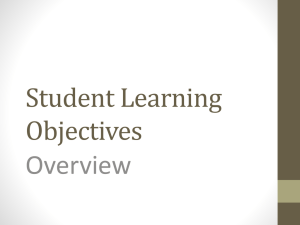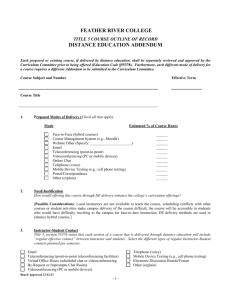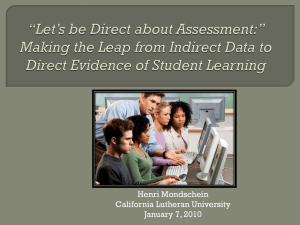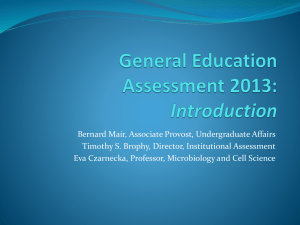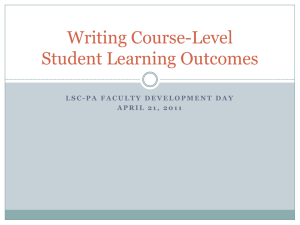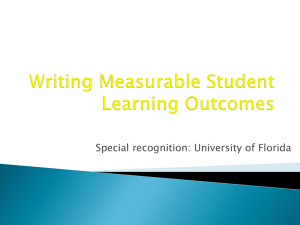pre-ap 25 final
advertisement
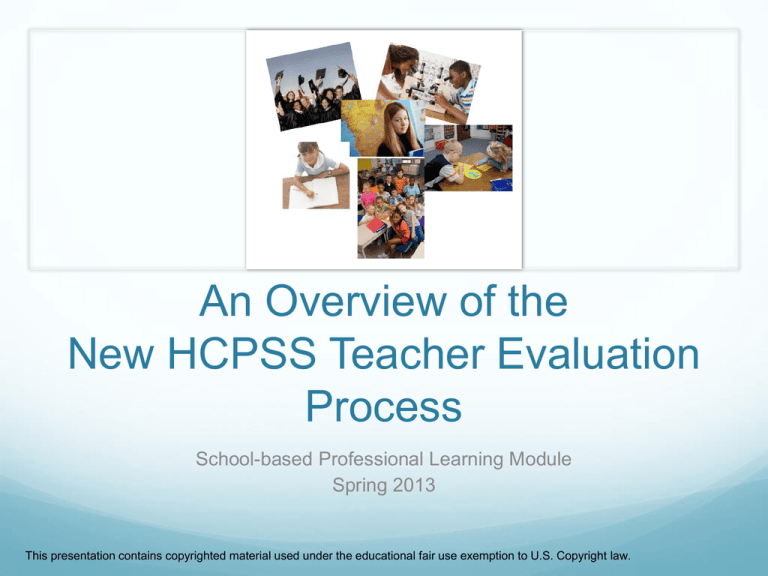
An Overview of the New HCPSS Teacher Evaluation Process School-based Professional Learning Module Spring 2013 This presentation contains copyrighted material used under the educational fair use exemption to U.S. Copyright law. Today’s Session Outcomes Participants will: gain knowledge about the new HCPSS Teacher Evaluation Process prepare to participate in the Countywide Professional Development Day on April 25, 2013. Question Parking Lot • Using the sticky notes provided, capture any questions you have. • Place them on the Question Parking Lot. • Your questions will contribute to a FAQ list. Vision of Exemplary Teaching for Student Learning “All Students Learn” Cognitive Development Personal Development Knowing The Learner Social Development WHO? Knowing the Curriculum & Content WHAT? Knowing Myself and My Influence on Learners Knowing the Pedagogy HOW? What’s New? Starting in the 2013-14 school year, HCPSS will be implementing a new teacher evaluation process for all teachers. We Learn So Our Students Learn •Site-based Professional Learning Modules •Self-directed Resources: Professional Learning Bundles •Framework Domain Courses •Ongoing, Customized Supports How did we arrive at this new Teacher Evaluation Process? Beginning in 2009, due to new Federal and State mandates, HCPSS revised the teacher evaluation process. A new evaluation process was developed in collaboration with school-based leaders, central office leaders, HCEA and HCAA. How did we arrive at this new Teacher Evaluation Process? The new HCPSS evaluation was designed to support teachers in implementing the Common Core curriculum ensuring the use of multiple measures. A pilot consisting of 10 schools is taking place this school year. (4-Elementary, 3-Middle, 3-High School) The new evaluation process goes into effect for all teachers during the 2013-2014 school year. What’s Changing? Replacement of Appendix D with a Goal Setting Form Inclusion of a new Domain for Student Growth Use of the 2013 Charlotte Danielson Framework for Teaching How will it affect teachers? The new evaluation is designed to support the professional growth of teachers and the academic achievement of our students. Teachers will focus on all four Danielson domains. Teachers will select areas of focus for the student growth component. Teachers will now be rated as ineffective, effective, or highly effective. HCPSS Teacher Evaluation Model Charlotte Danielson’s Framework For Teaching Professional Practice (50%) Qualitative Measures Domain 1 Planning and Preparation 12.5% Domain 2 Classroom Environment 12.5% Domain 3 Instruction 12.5% Domain 4 Professional Responsibilities 12.5% Domain 5 Student Growth (50%) Quantitative Measures Literacy Mathematical Practices • Reading • Writing • Speaking and Listening •Differentiation 25%/30% • Overarching Habits • Reasoning and Explaining • Modeling and Using Tools • Seeing Structure and Generalizing • Differentiation 25%/30% Growth on State Assessments (As Mandated by MSDE) 20% Creative Problem Solving in Support of MD STEM Standards of Practice • Understanding Challenges • Generation of Ideas • Preparation for Action • Application of Technology • Differentiation 25%/30% Content • Assessments • Performance-Based Tasks •Differentiation 25%/30% Student Growth (50%) Literacy 25%/30% 25%/30% Creative Problem Solving in Support of MD STEM Standards of Practice 25%/30% Content 25%/30% Growth on State Assessments ( Mandated by MSDE) 20% SLOs Mathematical Practices Past, Present, and Future With a partner, discuss the following questions comparing the new model with the one we have used in the past: What’s different? What’s similar? Student Growth What are Student Learning Objectives (SLOs)? A definition… Student Learning Objective. A specific, rigorous, long-term goal for groups of students that represents the most important learning during an interval of instruction. Determined in consultation with evaluator Flexible and job-specific Data-rich process SLOs and You Most teachers will write two SLOs. Teachers of grades 4 - 8 who are teachers of record for mathematics and/or English Language Arts whose students take the MSA will write one SLO. SLOs and You Non-tenured teachers will be evaluated on Domains 1- 4 (Professional Practice) and Domain 5 (Student Growth) on a yearly basis until tenured. SLOs and You Tenured teachers will be evaluated on Domains 1-4 (Professional Practice) every three years. All teachers will be evaluated on Domain 5: Student Growth (SLOs) every year. SLOs and You Teachers of HSA assessed areas must align one of their SLOs to the HSA. Timeline By September 30, 2013 Set goals in collaboration with evaluator. Write SLOs. May be individual or team goals. Fall Semester 2013 Demonstrate critical attributes through observation. Collect artifacts and evidence. Follow a continuous improvement process. By January 31, 2014 Mid-Year Progress Review: Confirm and revise goals, processes, document progress. Spring Semester 2014 End of Year Conference and Evaluation: Present documentation and reflection to evaluator. Evaluator completes evaluation and provides copy to teacher. Reflection/Exit Ticket Based on today’s overview of the new Teacher Evaluation Process, What is/are… one connection I made today? a question I still have? some supports I need? The April 25th Professional Development Day will be YOUR opportunity to: deepen understanding of what SLOs are; analyze and evaluate an example of an SLO; brainstorm artifacts and evidence to support SLOs; become aware of resources available to support the writing, implementation, and evaluation of SLOs. Support for writing SLOs April 25 PD session SLO template, guiding questions, and samples https://transitiontocommoncore.wikispaces.hc pss.org/Elementary+SLOs https://transitiontocommoncore.wikispaces.hc pss.org/Secondary+SLOs Between now and April 25 Check out draft SLOs on the Transition to Common Core wiki: transitiontocommoncore.wikispaces.hcpss.org/home An Overview of the New HCPSS Teacher Evaluation Process School-based Professional Learning Module Spring 2013 All images unless otherwise indicated are property of HCPSS or taken from Microsoft Clipart Gallery http://office.microsoft.com/en-us/images/

